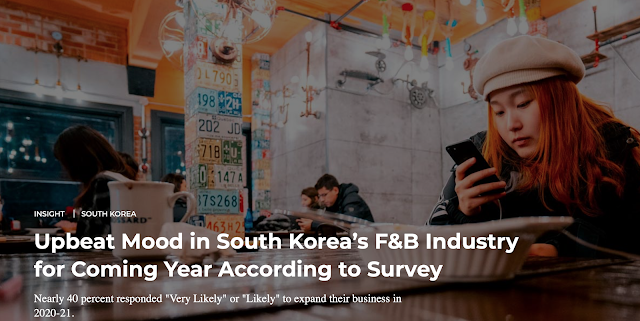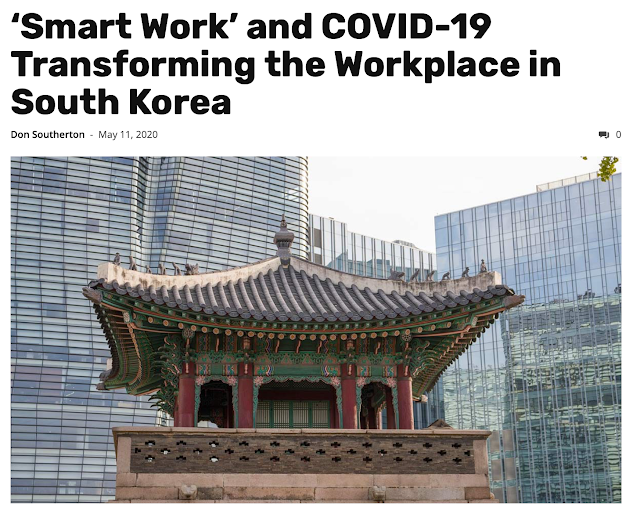As a trusted friend constantly reminds me, “Don, no one does what you do.”

I strive to ensure success and sustainability in dealing with Korea-facing business partnerships through well-communicated expectations and cross-cultural understanding.
It also requires a unique skill set—groomed over decades working with an ever-changing Korea.
I like the story that shortly after an engineer retires, a machine at his former factory stops working. They try everything they can do to fix it, to no avail. Finally, the boss calls up the engineer and asks him to come in and fix it.
The engineer agrees to do so as a paid consultant. He comes in, walks around the machine, looks at a few things, takes out a hammer, and whacks the machine. It whirrs into life.
The engineer presents his former boss with a bill for $5,000. The boss says, “This is ridiculous! What did you even do? I need an itemized bill.”
The engineer provides a new invoice that states:
· Hitting machine with a hammer: $5.00
· Knowing where to hit the machine: $4,995
My work is knowing when and where to use the ‘hammer’, catching issues early and then as needed providing work-throughs as projects can so easily get sidetracked. In fact, many assume when initial talks and progress seem smooth things will continue to move forward—which is rarely the case.
It’s one thing, too, for those well experienced in global business who are now engaged in Korea projects to expect past experience in the West will be enough to work through what can be escalating challenges—but in fact what many will find out is that they are poorly suited to adapting and being flexible (a very Korea business approach and norm). At the very least, working through issues can become a very lengthy learning process. Both ways it time-consuming and costly.
My long-time approach when providing work throughs is to step back and look for underlying concerns and nuances that are easily missed. Then knowing the Korean processes and mindset work for a resolution. Again, this is more art than science.
To summarize, impasses are common in all business—but what may work in the West to overcome issues will take a different approach in Korea.
The best model is to constantly be aware and sensitive to what may be unfolding. Use less direct and non-confrontational ways to gain deeper insights into any challenges and be open to alternative approaches at work-throughs.
As always, I look forward to discussing any challenges as well as any questions you may have.
I’ll have my hammer ready, too.
Don













Digitization of Hangul
October 9 is a National Holiday in South Korea—Hangul Day. This digitization of Hangul commentary will provide some insights into not only Korea but their native written language.
The Hidden Driver of Korea’s Economic Success
Dr. Peter Wonsok Yun and Don Southerton, October 2020
The Digitization of Hangul–we often see terms like “Miracle on the Han,” that highlight South Korea’s economic rise after decades of harsh Japanese colonial rule and then the devastation of the Korean War.
With only determination and its people as resources, Korea became one of the world’s top industrial, export-driven economies. In particular, the main contributions to this success story include the nation’s emphasis on higher education, as well as the role of government and private investment in innovation, technology, and R&D.
Looking deeper, what may be missed is the impact of digitizing the native written language Hangul. Crafted in the mid 15th century during the reign of King Sejeong. Hangul linguistically is seen as a very logical and structured written language script.
Inspired by a vision to make Korea information independent
Jumping forward, it was in the early 1990s that a local Korean company, today’s Hancom Group, successfully developed a native word processing program for the Korean language.
As Hangul was created so that the common people could accurately and easily read and write the Korean language, so too, the word processing software allowed Koreans to communicate digitally. https://office.hancom.com/about/history/
Although the Hangul word processing software grew in popularity, by 1998, the company nearly went bust, even though it was considered a national treasure: the Asian Financial Crisis and software piracy had brought the company to its knees.
Rival Microsoft which had only about 15% market penetration in office software at the time in Korea, offered $20 million to Hancom to stop producing its software and instead resell Microsoft’s localized Word program.
For a small investment, Microsoft would have wiped out their main competitor in Korea, one of the few countries in the world that had still resisted wide adoption of Microsoft’s office suite.
When the news of the proposed deal offering surfaced, Koreans united in a national fervor and raised over $10 million through a campaign to save the company.
In addition, the company’s near-bankruptcy brought the issue of software piracy under the spotlight. As a result, Koreans began to pay for their software and more began to adopt and use the Hangul software in Korea.
An Economic Driver
With the rise of globalization, and Korea as a nation leapfrogging economically, experts attribute much of the growth to the streamlining of both government policy and regulations. This was possible with a universally accepted digitalized Hangul well suited to the E-Government transfer of information. E-Government refers to a government that uses technological communications devices, such as computers and the Internet, to provide public services in a country or region.
This has also given Korea a strong competitive advantage—data management critical in the digital age.
Looking forward, South Korea today is at the forefront of AI and Cloud-based technology. That said, one may argue that many under-developed nations, most with their own indigenous languages, too, could follow Korea’s digitalization model.
Globally, South Korea and key digital firms like Hancom are well-positioned to support this and similar new endeavors such as Mobility, EV and AI—as the Korean proverb noted—A Rising Tide Lifts All Boats.
###